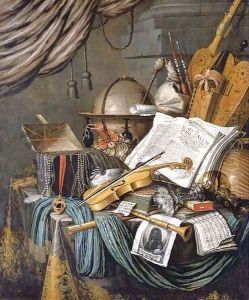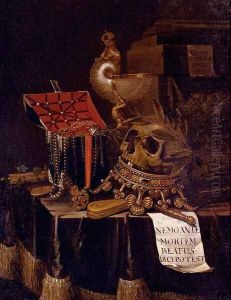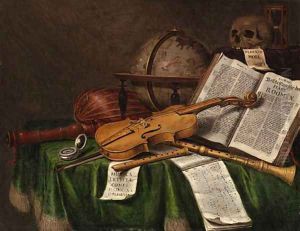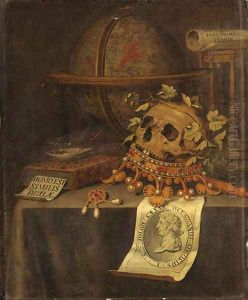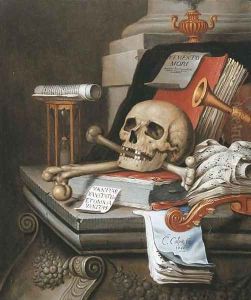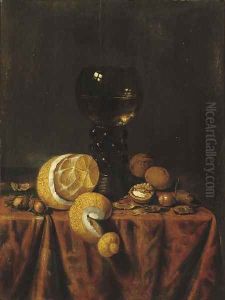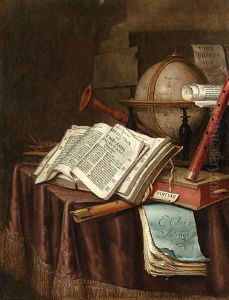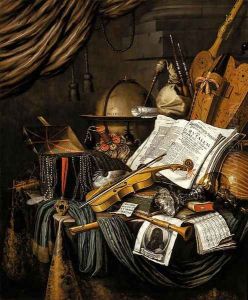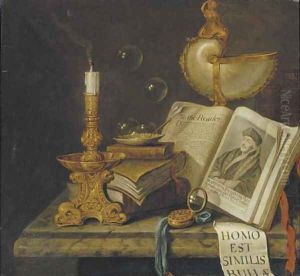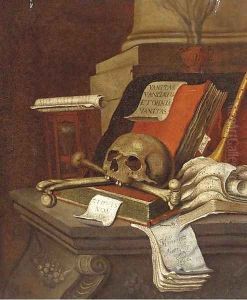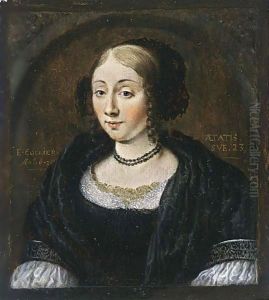Edwaert Collier Paintings
Edwaert Collier, also known as Evert Collier, was a Dutch Golden Age painter known for his skillful vanitas still-life paintings and trompe-l'œil, an art technique that uses realistic imagery to create the optical illusion that the depicted objects exist in three dimensions. Born in Breda, the Netherlands, around 1640, Collier's early life and training are not well-documented, but it is believed that he may have been a pupil of the still-life painter Francken Leemans in Haarlem.
Collier moved to Leiden by 1667, where he produced many of his renowned vanitas paintings. These artworks often contain symbols of mortality, such as skulls, extinguished candles, and hourglasses, reflecting the genre's emphasis on the transience of life and the futility of pleasure. His works are characterized by meticulous attention to detail and a rich use of color.
In the 1690s, Collier moved to England, where he spent most of his later life. During his time in London, he continued to paint vanitas pieces but became more famous for his trompe-l'œil works. These often took the form of letter racks and notice boards with various objects attached, such as combs, sealing wax, and newspapers, giving the illusion of a three-dimensional scene.
Edwaert Collier's contribution to art is significant in the context of the Dutch Golden Age's exploration of still life and trompe-l'œil. His work is held in high esteem for its technical quality and its philosophical depth, often provoking reflection on the nature of reality and the human condition. Collier died in 1708, leaving behind a legacy that continues to intrigue and delight viewers with the playful deception and profound insights found in his art.
